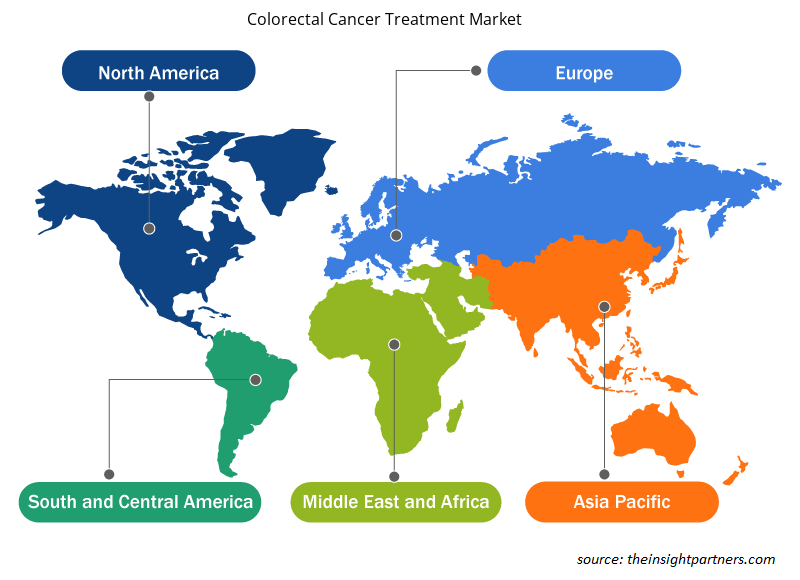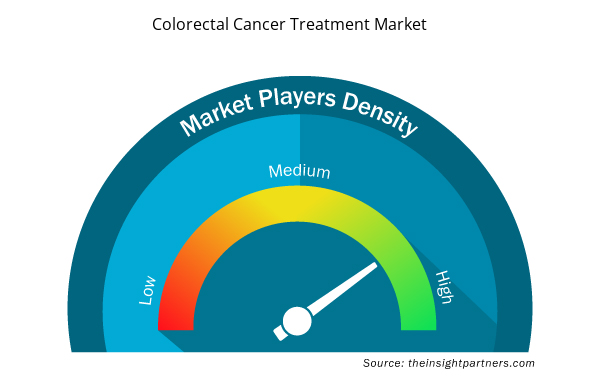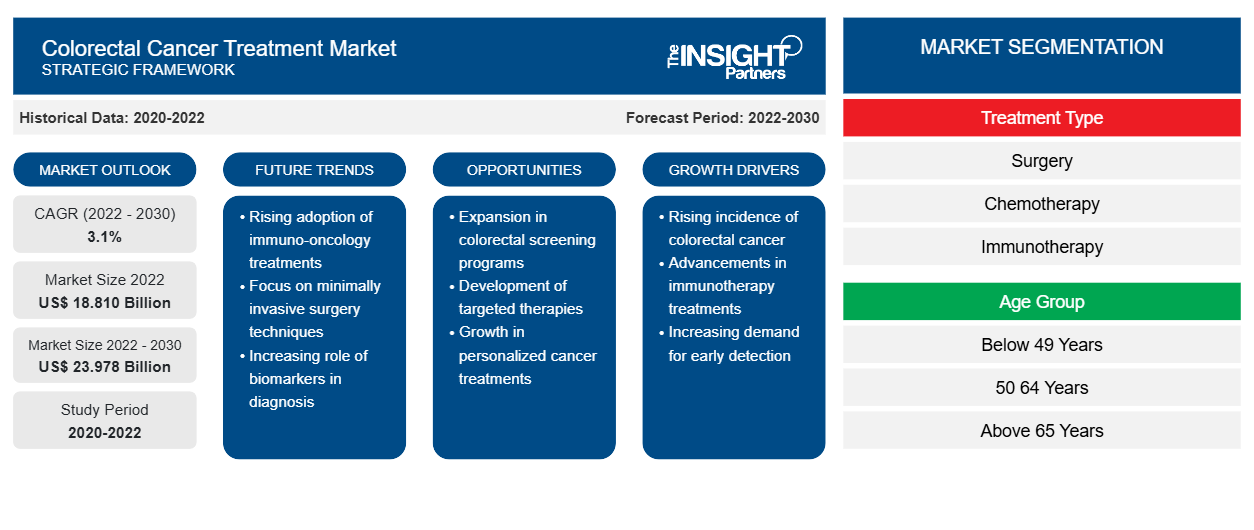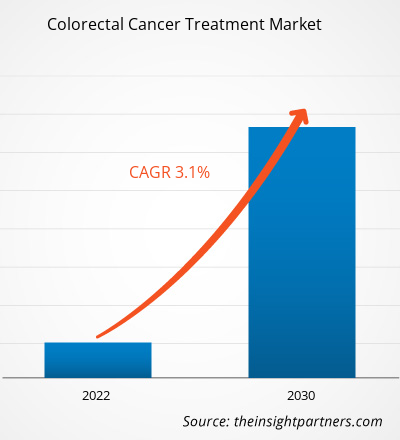[Informe de investigación] El mercado de tratamiento del cáncer colorrectal se valoró en 18.810 millones de dólares estadounidenses en 2022 y se proyecta que alcance los 23.978 millones de dólares estadounidenses en 2030. Se espera que registre una CAGR del 3,1 % en 2022-2030.
Perspectivas del mercado y opinión de analistas:
El creciente tamaño del mercado se atribuye al creciente número de casos de cáncer colorrectal y al aumento de las aprobaciones de terapias dirigidas e inmunoterapias para tratar el cáncer colorrectal . Además, las iniciativas estratégicas de las empresas para mantenerse competitivas en el mercado están impulsando el crecimiento del mercado. Es probable que un aumento significativo de los medicamentos personalizados para abordar las necesidades de los clientes en el tratamiento del cáncer colorrectal genere nuevas tendencias en el mercado del tratamiento del cáncer colorrectal durante el período de pronóstico.
Factores impulsores del crecimiento y desafíos:
El cáncer colorrectal es un tumor maligno que se presenta en los tejidos del colon o del recto. Factores relacionados con el estilo de vida como la baja ingesta de frutas y verduras, el tabaquismo, el sedentarismo, la obesidad, la alta ingesta de carnes procesadas y el consumo excesivo de alcohol contribuyen al aumento de los casos de cáncer colorrectal . Es el tercer tipo de cáncer más común (excluyendo el cáncer de piel ) diagnosticado anualmente en los EE. UU. En 2023, la Organización Mundial de la Salud (OMS) declaró que el cáncer colorrectal es el tercer cáncer más común en todo el mundo y es la segunda causa principal de muertes relacionadas con el cáncer a nivel mundial. Según la misma fuente, aproximadamente el 10% del total de casos diagnosticados a nivel mundial son casos de cáncer colorrectal . Según las estimaciones de la Sociedad Estadounidense del Cáncer, en 2023 se registraron en los EE. UU. alrededor de 106 000 nuevos casos de cáncer de colon y aproximadamente 46 000 nuevos casos de cáncer de recto.
Según los datos proporcionados por el Sistema Europeo de Información sobre el Cáncer, el cáncer colorrectal representó alrededor del 12,7% de todos los nuevos cánceres diagnosticados en 2020, y aproximadamente el 12,4% de las mortalidades totales fueron causadas por cáncer colorrectal en 2020 en los países de la UE-27. Debido a esta alta prevalencia, el cáncer colorrectal es el segundo cáncer más frecuente, después del cáncer de mama, y la segunda causa principal de muertes relacionadas con el cáncer, después del cáncer de pulmón. Según la Agencia Internacional para la Investigación del Cáncer y GLOBOCAN , en 2020 se notificaron aproximadamente 1 millón de nuevos casos de cáncer colorrectal en Asia. Japón, Malasia, China, Singapur, Turquía y Corea fueron testigos de altas tasas de prevalencia en comparación con los demás países de Asia Pacífico. Además, para 2040, se estima que la carga mundial de cáncer colorrectal aumentará en un 72% a más de 3 millones de casos nuevos, lo que representa una grave amenaza para la salud humana. Por lo tanto, la creciente incidencia del cáncer colorrectal impulsa el crecimiento del mercado de tratamiento del cáncer colorrectal .
Personalice este informe según sus necesidades
Obtendrá personalización en cualquier informe, sin cargo, incluidas partes de este informe o análisis a nivel de país, paquete de datos de Excel, así como también grandes ofertas y descuentos para empresas emergentes y universidades.
- Obtenga las principales tendencias clave del mercado de este informe.Esta muestra GRATUITA incluirá análisis de datos, desde tendencias del mercado hasta estimaciones y pronósticos.
Segmentación y alcance del informe:
El análisis del mercado de tratamiento del cáncer colorrectal se ha llevado a cabo considerando los siguientes segmentos: tipo de tratamiento, grupo de edad, usuario final y geografía. El mercado de tratamiento del cáncer colorrectal , por tipo de tratamiento, está segmentado en cirugía, quimioterapia , terapia dirigida, inmunoterapia y otros. Según el grupo de edad, el mercado se divide en menores de 49 años, de 50 a 64 años y mayores de 65 años. El mercado, por usuario final, está segmentado en hospitales, clínicas especializadas, atención domiciliaria y otros. El alcance del informe del mercado de tratamiento del cáncer colorrectal incluye América del Norte (EE. UU., Canadá y México), Europa (España, Reino Unido, Alemania, Francia, Italia y el resto de Europa), Asia Pacífico (Corea del Sur, China, Japón, India, Australia y el resto de Asia Pacífico), Medio Oriente y África (Sudáfrica, Arabia Saudita, Emiratos Árabes Unidos y el resto de Medio Oriente y África) y América del Sur y Central (Brasil, Argentina y el resto de América del Sur y Central).
Análisis segmental:
El mercado de tratamiento del cáncer colorrectal, por tipo de tratamiento, está segmentado en cirugía, quimioterapia, terapia dirigida, inmunoterapia y otros. En 2022, el segmento de cirugía tuvo la mayor participación de mercado en el tratamiento del cáncer colorrectal y se espera que registre la CAGR más alta durante 2022-2030. La cirugía se considera el tratamiento más común para todas las etapas del cáncer colorrectal . Si el cáncer se diagnostica en las primeras etapas, se realizan procedimientos quirúrgicos para extirpar el tumor.
Según el grupo de edad, el mercado se segmenta en menores de 49 años, de 50 a 64 años y mayores de 65 años. En 2022, el segmento de mayores de 65 años tuvo la mayor participación en el mercado de tratamiento del cáncer colorrectal y se proyecta que registre la CAGR más alta durante 2022-2030. Según un informe de la Sociedad Estadounidense del Cáncer, se estima que más de la mitad de los nuevos casos diagnosticados en los EE. UU. tienen más de 65 años y más de dos tercios de todas las muertes por cáncer colorrectal se notificaron entre personas mayores de 65 años.
Según el usuario final, el mercado se divide en hospitales, clínicas especializadas, atención domiciliaria y otros. Es probable que el tamaño del mercado de tratamiento del cáncer colorrectal para el segmento hospitalario aumente durante 2022-2030.
Análisis regional:
América del Norte es el mayor contribuyente al crecimiento del mercado mundial de tratamiento del cáncer colorrectal. Se prevé que Asia Pacífico muestre la CAGR más alta en el mercado durante 2022-2030. América del Norte tuvo la mayor participación del mercado global en 2022 debido al creciente número de cánceres colorrectales, el aumento de los avances tecnológicos, la alta prevalencia del cáncer colorrectal en personas menores de 50 años y la presencia de actores clave del mercado involucrados en desarrollos de productos nuevos y existentes. En América del Norte, Estados Unidos tuvo la mayor participación del mercado en 2022.
Desarrollos industriales y oportunidades futuras:
El pronóstico del mercado de tratamiento del cáncer colorrectal se estima sobre la base de diversos hallazgos de investigación primaria y secundaria, como publicaciones de empresas clave, datos de asociaciones y bases de datos. Las estrategias de los actores clave que operan en el mercado de tratamiento del cáncer colorrectal se enumeran a continuación:
- En noviembre de 2023, Takeda Pharmaceutical anunció que había recibido la aprobación de la Administración de Alimentos y Medicamentos de los Estados Unidos (FDA) para su terapia dirigida oral FRUZAQLA (fruquintinib) para tratar a adultos que padecen cáncer colorrectal metastásico (mCRC). FRUZAQLA es el primer y único inhibidor selectivo de las tres quinasas del receptor VEGF aprobado en los EE. UU. para tratar el mCRC anteriormente, independientemente del estado del biomarcador.
- En agosto de 2023, Taiho Pharmaceutical Co., Ltd. anunció que la FDA de EE. UU. había aprobado LONSURF (trifluridina/tipiracilo) como agente único y en combinación con bevacizumab para el tratamiento de pacientes adultos con cáncer colorrectal metastásico. Estos pacientes reciben tratamiento previo con quimioterapia basada en oxaliplatino, fluoropirimidina e irinotecán, una terapia biológica anti-VEGF.
Perspectivas regionales del mercado de tratamiento del cáncer colorrectal
Los analistas de Insight Partners explicaron en detalle las tendencias y los factores regionales que influyen en el mercado de tratamiento del cáncer colorrectal durante el período de pronóstico. Esta sección también analiza los segmentos y la geografía del mercado de tratamiento del cáncer colorrectal en América del Norte, Europa, Asia Pacífico, Oriente Medio y África, y América del Sur y Central.

- Obtenga datos regionales específicos para el mercado de tratamiento del cáncer colorrectal
Alcance del informe de mercado sobre el tratamiento del cáncer colorrectal
| Atributo del informe | Detalles |
|---|---|
| Tamaño del mercado en 2022 | US$ 18.810 mil millones |
| Tamaño del mercado en 2030 | US$ 23.978 mil millones |
| CAGR global (2022-2030) | 3,1% |
| Datos históricos | 2020-2022 |
| Período de pronóstico | 2022-2030 |
| Segmentos cubiertos | Por tipo de tratamiento
|
| Regiones y países cubiertos | América del norte
|
| Líderes del mercado y perfiles de empresas clave |
|
Densidad de actores del mercado de tratamiento del cáncer colorrectal: comprensión de su impacto en la dinámica empresarial
El mercado de tratamiento del cáncer colorrectal está creciendo rápidamente, impulsado por la creciente demanda de los usuarios finales debido a factores como la evolución de las preferencias de los consumidores, los avances tecnológicos y una mayor conciencia de los beneficios del producto. A medida que aumenta la demanda, las empresas amplían sus ofertas, innovan para satisfacer las necesidades de los consumidores y aprovechan las tendencias emergentes, lo que impulsa aún más el crecimiento del mercado.
La densidad de actores del mercado se refiere a la distribución de las empresas o firmas que operan dentro de un mercado o industria en particular. Indica cuántos competidores (actores del mercado) están presentes en un espacio de mercado determinado en relación con su tamaño o valor total de mercado.
Las principales empresas que operan en el mercado del tratamiento del cáncer colorrectal son:
- Genentech Inc
- Eli Lilly y compañía
- Pfizer Inc
- Productos farmacéuticos Takeda
- Bristol-Myers Squibb
Descargo de responsabilidad : Las empresas enumeradas anteriormente no están clasificadas en ningún orden particular.

- Obtenga una descripción general de los principales actores clave del mercado de tratamiento del cáncer colorrectal
Panorama competitivo y empresas clave:
Genentech Inc, Eli Lilly and Company, Pfizer Inc, Takeda Pharmaceuticals, Bristol Myers Squibb, Merck, Bayer AG, Regeneron Pharmaceuticals Inc, Novartis AG e Ipsen Biopharmaceuticals Inc se encuentran entre los actores destacados que se describen en el informe del mercado de tratamiento del cáncer colorrectal. Además, se han estudiado y analizado varios otros actores durante el estudio para obtener una visión holística del mercado y su ecosistema. Estas empresas se centran en las expansiones geográficas y los lanzamientos de nuevos productos para satisfacer la creciente demanda de los consumidores de todo el mundo y aumentar su gama de productos en carteras especializadas. Su presencia global les permite atender a una gran base de clientes, lo que facilita posteriormente la expansión del mercado.
- Análisis histórico (2 años), año base, pronóstico (7 años) con CAGR
- Análisis PEST y FODA
- Tamaño del mercado Valor/volumen: global, regional, nacional
- Industria y panorama competitivo
- Conjunto de datos de Excel



Report Coverage
Revenue forecast, Company Analysis, Industry landscape, Growth factors, and Trends

Segment Covered
This text is related
to segments covered.

Regional Scope
North America, Europe, Asia Pacific, Middle East & Africa, South & Central America

Country Scope
This text is related
to country scope.
Preguntas frecuentes
The colorectal cancer treatment market majorly consists of the players such Genentech Inc, Eli Lilly and Company, Pfizer Inc, Takeda Pharmaceuticals, Bristol Myers Squibb, Merck, Bayer AG, Regeneron Pharmaceuticals Inc, Novartis AG, and Ipsen Biopharmaceuticals Inc.
Based on geography, the colorectal cancer treatment market is segmented into North America (the US, Canada, and Mexico), Europe (the UK, Germany, France, Italy, Spain, and the Rest of Europe), Asia Pacific (China, Japan, India, South Korea, Australia, and the Rest of Asia Pacific), the Middle East & Africa (the UAE, Saudi Arabia, South Africa, and Rest of the Middle East & Africa), and South & Central America (Brazil, Argentina, and the Rest of South & Central America). North America is the largest contributor to the growth of the global colorectal cancer treatment market. Asia Pacific is expected to register the highest CAGR in the colorectal cancer treatment market during 2022–2030.
Colorectal cancer often begins as a growth called a polyp inside the colon or rectum. Colorectal cancer happens when there are changes in genetic material (DNA). These changes are also called mutations or variants. Often, the genetic changes that lead to colorectal cancer happen during lifetime and the exact cause is unknown. Colorectal cancer treatment includes surgery, chemotherapy, radiation therapy, targeted therapy, immunotherapy, cryosurgery, and radiofrequency ablation.
The growing number of colorectal cancer cases and the subsequent increase in product launches are factors predominantly driving the colorectal cancer treatment market size. However, the high cost associated with colorectal cancer treatment in developing countries hinders the market growth.
The colorectal cancer treatment market, by treatment type, is segmented into surgery, chemotherapy, targeted therapy, immunotherapy, and others. In 2022, the surgery segment held the largest colorectal cancer treatment market share and is expected to record the highest CAGR during 2022–2030.
Based on age group, the market is segmented into below 49 years, 50–64 years, and above 65 years. In 2022, the above 65 years segment held the largest colorectal cancer treatment market share and is projected to record the highest CAGR during 2022–2030.
Based on end user, the market is divided into hospitals, specialty clinics, home care, and others. The colorectal cancer treatment market size for the hospital segment is likely to surge during 2022–2030.
Trends and growth analysis reports related to Life Sciences : READ MORE..
The List of Companies - Colorectal Cancer Treatment Market
- Genentech Inc
- Eli Lilly and Company
- Pfizer Inc
- Takeda Pharmaceuticals
- Bristol Myers Squibb
- Merck
- Bayer AG
- Regeneron Pharmaceuticals Inc
- Novartis AG
- Ipsen Biopharmaceuticals
The Insight Partners performs research in 4 major stages: Data Collection & Secondary Research, Primary Research, Data Analysis and Data Triangulation & Final Review.
- Data Collection and Secondary Research:
As a market research and consulting firm operating from a decade, we have published and advised several client across the globe. First step for any study will start with an assessment of currently available data and insights from existing reports. Further, historical and current market information is collected from Investor Presentations, Annual Reports, SEC Filings, etc., and other information related to company’s performance and market positioning are gathered from Paid Databases (Factiva, Hoovers, and Reuters) and various other publications available in public domain.
Several associations trade associates, technical forums, institutes, societies and organization are accessed to gain technical as well as market related insights through their publications such as research papers, blogs and press releases related to the studies are referred to get cues about the market. Further, white papers, journals, magazines, and other news articles published in last 3 years are scrutinized and analyzed to understand the current market trends.
- Primary Research:
The primarily interview analysis comprise of data obtained from industry participants interview and answers to survey questions gathered by in-house primary team.
For primary research, interviews are conducted with industry experts/CEOs/Marketing Managers/VPs/Subject Matter Experts from both demand and supply side to get a 360-degree view of the market. The primary team conducts several interviews based on the complexity of the markets to understand the various market trends and dynamics which makes research more credible and precise.
A typical research interview fulfils the following functions:
- Provides first-hand information on the market size, market trends, growth trends, competitive landscape, and outlook
- Validates and strengthens in-house secondary research findings
- Develops the analysis team’s expertise and market understanding
Primary research involves email interactions and telephone interviews for each market, category, segment, and sub-segment across geographies. The participants who typically take part in such a process include, but are not limited to:
- Industry participants: VPs, business development managers, market intelligence managers and national sales managers
- Outside experts: Valuation experts, research analysts and key opinion leaders specializing in the electronics and semiconductor industry.
Below is the breakup of our primary respondents by company, designation, and region:

Once we receive the confirmation from primary research sources or primary respondents, we finalize the base year market estimation and forecast the data as per the macroeconomic and microeconomic factors assessed during data collection.
- Data Analysis:
Once data is validated through both secondary as well as primary respondents, we finalize the market estimations by hypothesis formulation and factor analysis at regional and country level.
- Macro-Economic Factor Analysis:
We analyse macroeconomic indicators such the gross domestic product (GDP), increase in the demand for goods and services across industries, technological advancement, regional economic growth, governmental policies, the influence of COVID-19, PEST analysis, and other aspects. This analysis aids in setting benchmarks for various nations/regions and approximating market splits. Additionally, the general trend of the aforementioned components aid in determining the market's development possibilities.
- Country Level Data:
Various factors that are especially aligned to the country are taken into account to determine the market size for a certain area and country, including the presence of vendors, such as headquarters and offices, the country's GDP, demand patterns, and industry growth. To comprehend the market dynamics for the nation, a number of growth variables, inhibitors, application areas, and current market trends are researched. The aforementioned elements aid in determining the country's overall market's growth potential.
- Company Profile:
The “Table of Contents” is formulated by listing and analyzing more than 25 - 30 companies operating in the market ecosystem across geographies. However, we profile only 10 companies as a standard practice in our syndicate reports. These 10 companies comprise leading, emerging, and regional players. Nonetheless, our analysis is not restricted to the 10 listed companies, we also analyze other companies present in the market to develop a holistic view and understand the prevailing trends. The “Company Profiles” section in the report covers key facts, business description, products & services, financial information, SWOT analysis, and key developments. The financial information presented is extracted from the annual reports and official documents of the publicly listed companies. Upon collecting the information for the sections of respective companies, we verify them via various primary sources and then compile the data in respective company profiles. The company level information helps us in deriving the base number as well as in forecasting the market size.
- Developing Base Number:
Aggregation of sales statistics (2020-2022) and macro-economic factor, and other secondary and primary research insights are utilized to arrive at base number and related market shares for 2022. The data gaps are identified in this step and relevant market data is analyzed, collected from paid primary interviews or databases. On finalizing the base year market size, forecasts are developed on the basis of macro-economic, industry and market growth factors and company level analysis.
- Data Triangulation and Final Review:
The market findings and base year market size calculations are validated from supply as well as demand side. Demand side validations are based on macro-economic factor analysis and benchmarks for respective regions and countries. In case of supply side validations, revenues of major companies are estimated (in case not available) based on industry benchmark, approximate number of employees, product portfolio, and primary interviews revenues are gathered. Further revenue from target product/service segment is assessed to avoid overshooting of market statistics. In case of heavy deviations between supply and demand side values, all thes steps are repeated to achieve synchronization.
We follow an iterative model, wherein we share our research findings with Subject Matter Experts (SME’s) and Key Opinion Leaders (KOLs) until consensus view of the market is not formulated – this model negates any drastic deviation in the opinions of experts. Only validated and universally acceptable research findings are quoted in our reports.
We have important check points that we use to validate our research findings – which we call – data triangulation, where we validate the information, we generate from secondary sources with primary interviews and then we re-validate with our internal data bases and Subject matter experts. This comprehensive model enables us to deliver high quality, reliable data in shortest possible time.


 Obtenga una muestra gratuita de este informe
Obtenga una muestra gratuita de este informe